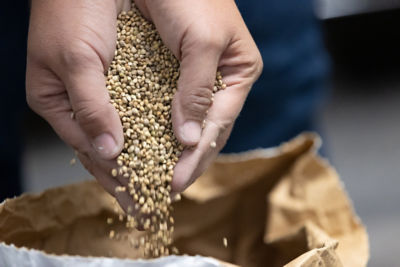Causal Agent
Oidium neolycopersicum
Distribution
Australia, Canada, Europe, Japan, UK and USA
Symptoms
The disease first appears as small circular areas of whitish fungal growth with sporulation occurring mainly on the upper leaf surface. As the sporulating lesions enlarge, the underlying leaf tissue turns yellow, eventually becoming brown and shriveled. Sporulation typically occurs on the upper leaf surface, distinguishing Oidium from Leveillula, which typically sporulates on the lower leaf surface. When infection is severe, masses of powdery fungal sporulation will cover the entire leaf surface as well as the petiole, stem and calyx, however, the fruit remains uninfected. Although this fungus has been reported in the field, it is mainly a problem in greenhouses where yield reductions result from defoliation.
 Oidium neolycopersici: leaves of susceptible (left) and intermediate-resistant (right) plants.
Oidium neolycopersici: leaves of susceptible (left) and intermediate-resistant (right) plants.
 Oidium neolycopersici: leaves of susceptible (left) and intermediate-resistant (right) plants.
Oidium neolycopersici: leaves of susceptible (left) and intermediate-resistant (right) plants.
Conditions for Development
This fungus has a relatively wide host range on which it can survive, and the fungal conidia are readily disseminated for long distances by air movement. Optimum conditions for disease development include low intensity light and temperatures between 20-27°C (68-81°F) accompanied by high (85-95%) relative humidity. However, infection can occur at a lower (50%) relative humidity.
Control
Several fungicides, including sulfur,can be effective in controlling this disease if good foliage coverage is obtained and they are applied in a timely manner.



